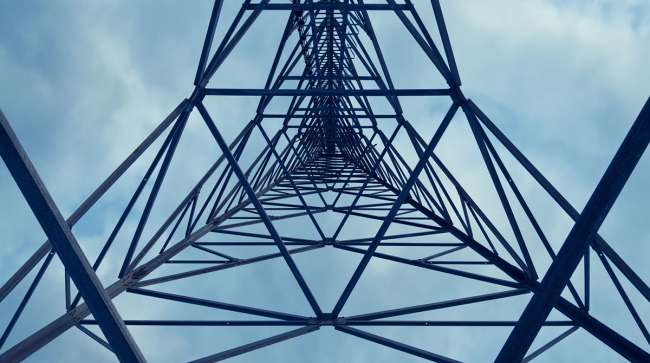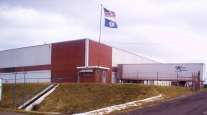Senior Reporter
AM Radio Transmitter Sites Now Valuable Real Estate for Logistics Industry

[Stay on top of transportation news: Get TTNews in your inbox.]
The familiar real estate adage “location, location, location” rings true these days for huge tracts on the outskirts of major cities — sites that for decades housed AM radio towers but that today command top dollar as e-commerce fuels rising demand for new warehouses and logistics centers.
Look no further than the $51 million sale of a five-acre parcel in Queens, N.Y., where an AM radio station will eventually abandon its existing tower and transmitter site, and move it.
New York radio station WFME’s owner, Nashville, Tenn.-based Family Radio, sold its AM transmitter site to Prologis, a San Francisco developer that specializes in building warehouses for companies looking to expand final-mile capability.

In this special two-part year in review, we look at the technology and regulatory developments that will help you and your business in 2021. Transport Topics Reporter Eleanor Lamb and Managing Editor for Features Seth Clevenger discuss HOS, software, equipment and more. Hear a snippet, above, and get the full program by going to RoadSigns.TTNews.com.
This property is situated near the Long Island Expressway, the Brooklyn-Queens Expressway, the Queens-Midtown Tunnel, and La Guardia and JFK airports. The spot’s current value as a logistics hub far outstrips its importance to a broadcast outlet that didn’t register in New York’s most recent radio ratings book.
"Long term, we see this as a strategic move that adds to our growing footprint of high-quality logistics space that offers quick and easy access to consumers." said Jeremiah Kent, Prologis senior vice president of value added investments. "In one of the most densely populated markets in the world where demand for logistics real estate is high and land is scarce, Prologis is well-positioned to respond to the acceleration of e-commerce and consumers’ expectation for same- and next-day delivery services.”
The rising value of these locations is being driven by changing consumer habits and rapid technological evolution. Sites on the edge of town that in radio’s heyday were cheap and plentiful can now house vital links in a supply chain propelled by technology that was hard to imagine back in AM’s early days.
Elon University journalism professor Richard Landesberg told Transport Topics most AM station owners know their transmitter sites are worth more than the licenses for their stations — licenses that, as a practical matter, are issued by the Federal Communications Commission and are not technically owned by licensees.
“It used to be if you were in your car, you listened to AM radio because that’s all there was,” said Landesberg, a former network radio bureau chief in Los Angeles and London with Mutual/NBC Radio. “A lot of AM broadcasters are giving up their licenses. It’s because the licenses aren’t worth much, but the land is valuable. If you’re a small, 5,000-watt station that served a community, those days are gone.”
Landesberg noted that value is harmed by AM radio’s audio quality, which is far weaker than that of FM stations and digital services such as streaming audio, satellite radio and internet stations.
FCC data shows that since 2000 nearly 400 AM stations have ceased operations. The trend has accelerated during the COVID-19 pandemic — nearly 80 stations have gone silent this year.
Most FM stations install their transmitters and much-smaller antennas atop office buildings.
Arizona State University logistics professor Dale Rogers told TT he expects the demand for warehouse space to accelerate as e-commerce becomes more critical to consumers.
“It’s pretty clear urban land is going to be more valuable, especially in particular areas,” Rogers said. “It’s places where there are a lot of exciting things going on; we’ll see a lot more of this.”
Broadcast groups such as iHeartRadio have sold or leased hundreds of transmitter and tower sites to privately owned tower management companies, including Boca Raton, Fla.-based Vertical Bridge. These companies are either developing the real estate or, in some cases, building lucrative cellular antennas.
Vertical Bridge owns or manages 288,000 antenna sites nationwide, including wireless and broadcast towers, rooftops, land parcels and billboards.
Other tower companies including American Tower have substantial real estate portfolios.
Another broadcast group, Cumulus Media, which emerged from bankruptcy protection in 2018, has been looking to sell its transmitter sites to capitalize on the high real estate prices.
But it’s not just low-rated or struggling station groups cashing in.
The owners of WBBM 780 AM/105.9 FM — the top-rated station in Chicago — in 2018 sold the station’s 42-acre transmitter site near O’Hare International Airport to Bridge Development Partners for $46 million. The 695-foot antenna and a smaller backup unit had been in use since 1942, but now a 750,000-square-foot logistics and warehouse complex is being developed on the site.
Bridge Development’s Nick Siegel told TT the spot was made more valuable by a nearby 9.8-mile highway that opened in 2017.
“This site had unparalleled highway access,” he said. “That’s about as close as you can get to O’Hare, and for us this was proximity to the other freight forwarders.”
Technology also is making it easier to relocate AM transmitters. While stations previously needed their own transmitter sites, engineering improvements now permit more than one station on a single antenna. WBBM now shares an antenna with another station in its ownership group, and WFME likely will do the same thing.
“AM radio is not making the money it used to,” Elon’s Landesberg told TT. “It used to be if you owned an AM radio station it was a license to print money. Now, it’s valuable real estate, and they’re not making more of that. Whatever land use brings in the most money, then the antenna is coming down.”
Want more news? Listen to today's daily briefing:
Subscribe: Apple Podcasts | Spotify | Amazon Alexa | Google Assistant | More




